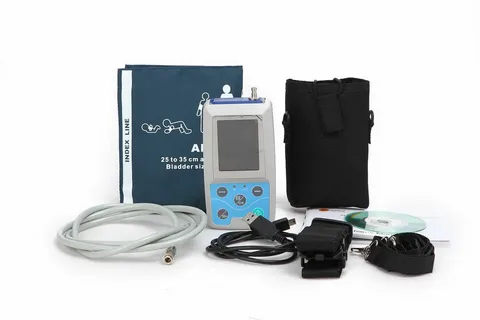In the fast-paced environment of modern healthcare, every component of a monitoring system plays a crucial role—yet some parts often get overlooked. One of these silent but essential parts is the NIBP hose.
While monitors and cuffs usually get all the attention, the hose that connects them ensures smooth communication between machine and patient. Without a reliable hose, even the best blood pressure monitor can deliver inconsistent results.
Let’s explore what NIBP hoses do, why they matter, and what to look for when buying or replacing them.
What Are NIBP Hoses?
NIBP (Non-Invasive Blood Pressure) hoses are the flexible tubes that connect the BP cuff to the monitoring device. They serve as the physical and functional link that transmits air pressure between the monitor and the cuff.
Simply put, no hose = no pressure = no reading.
Why Are They Important?
It’s easy to underestimate the role of a hose in blood pressure measurement. But even minor air leaks, cracks, or poor fittings in the hose can:
- Delay readings
- Cause inaccurate measurements
- Trigger false error messages on the monitor
- Reduce patient safety and comfort
This small accessory directly impacts the system’s performance.
Common Types of NIBP Hoses
Different monitors and environments require different hose configurations. Some of the most common types include:
- Single Hose Systems: Standard for general use with basic monitors.
- Dual Hose Systems: Used in more advanced or older systems for enhanced air control.
- Coiled Hoses: Useful in mobile or emergency settings to prevent tangling.
- Multi-connector Hoses: Designed to fit multiple monitor brands through adapter ends.
Always verify the system your facility uses before ordering replacements.
Signs Your NIBP Hose Needs Replacing
Like all medical accessories, hoses have a limited life span. Watch out for:
- Visible cracks or kinks
- Loose connectors
- Difficulty maintaining inflation
- Hissing or leaking air sounds during use
Routine inspection can prevent bigger issues during patient monitoring.
What to Look for in a High-Quality Hose
Not all hoses are built the same. Before you purchase, check if your hose offers:
- Strong, flexible material that resists cracking
- Secure fittings for leak-proof performance
- Latex-free construction to avoid allergic reactions
- Compatibility with your monitor brand (e.g., Philips, GE, Mindray, Welch Allyn)
A high-quality hose doesn’t just work well—it helps ensure patient safety.
Maintenance Tips for NIBP Hoses
To extend the life of your hoses and avoid sudden failure:
- Clean them regularly with mild disinfectants
- Avoid sharp bends or overstretching during use or storage
- Replace them proactively—don’t wait for failure
- Label and organize hoses by department or usage type
These simple steps can save costs and reduce downtime.
Are Universal Hoses a Good Idea?
Universal NIBP hoses may seem like a convenient choice, but they don’t always offer a perfect fit. Loose or over-tight connections can cause leaks or errors. If you go this route, ensure the adapter ends are secure and tested with your monitor brand.
In most cases, it’s better to go with brand-compatible hoses that are approved for your device model.
Where to Buy NIBP Hoses
Need reliable replacements? Explore a wide range of NIBP hoses at The Biomed Guys. They offer durable, high-quality hoses compatible with major brands and monitor systems. Whether you’re equipping a new ward or replacing worn-out hoses, their selection supports patient safety and clinical efficiency.
Final Thoughts
In a world of high-tech monitors and advanced diagnostics, it’s easy to overlook the basics. But a great NIBP system is only as good as its components—and that includes the hose. By choosing high-quality NIBP hoses, maintaining them properly, and replacing them on time, you ensure more accurate readings, fewer errors, and better patient outcomes.
Small part. Big responsibility.






